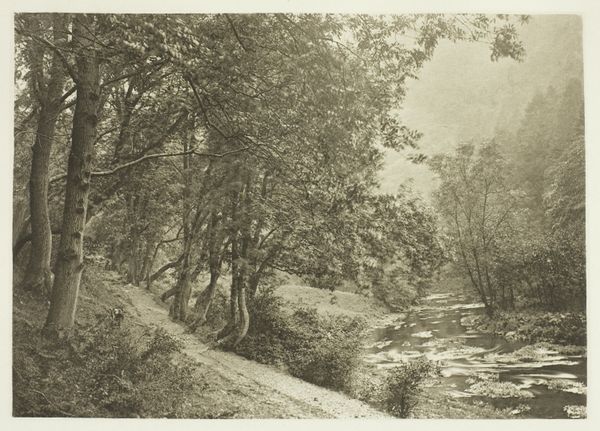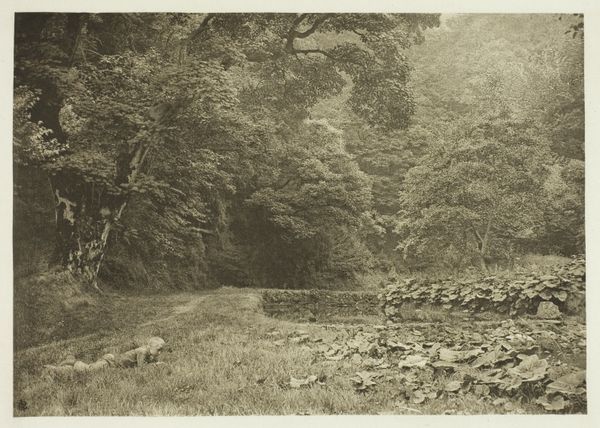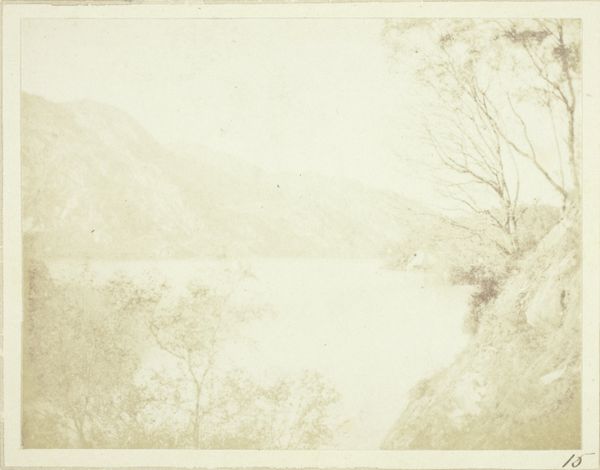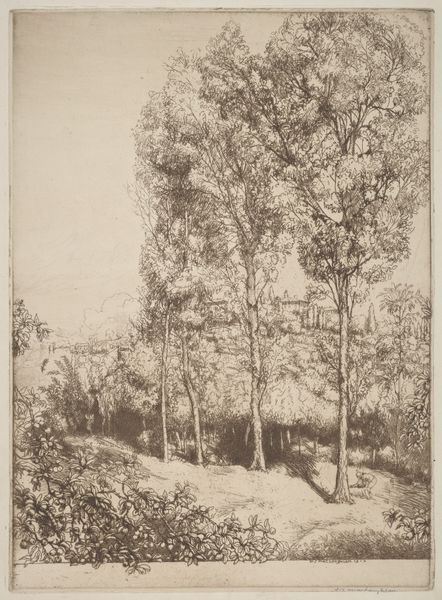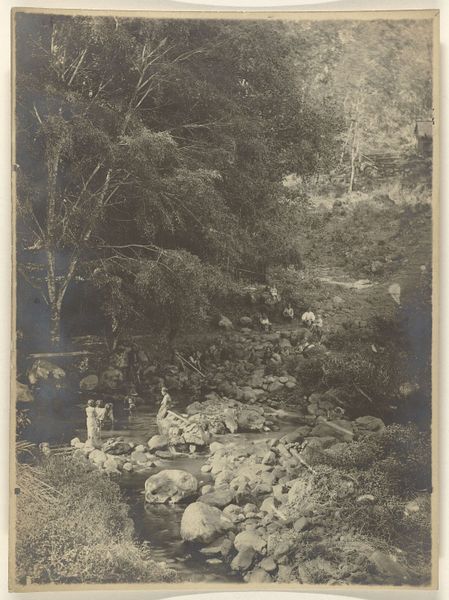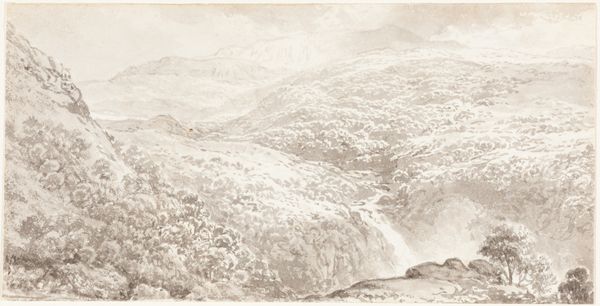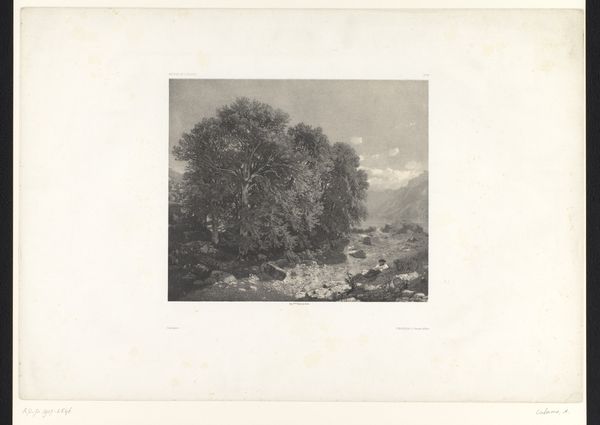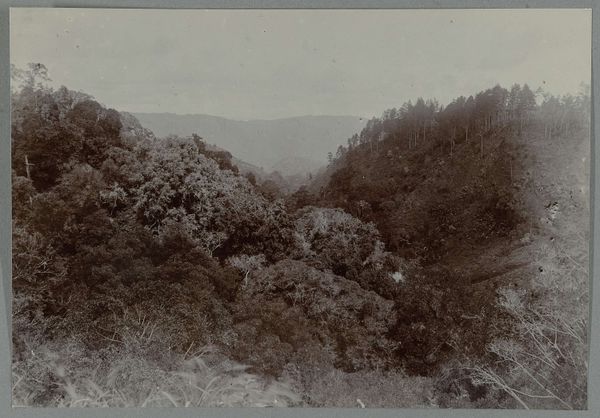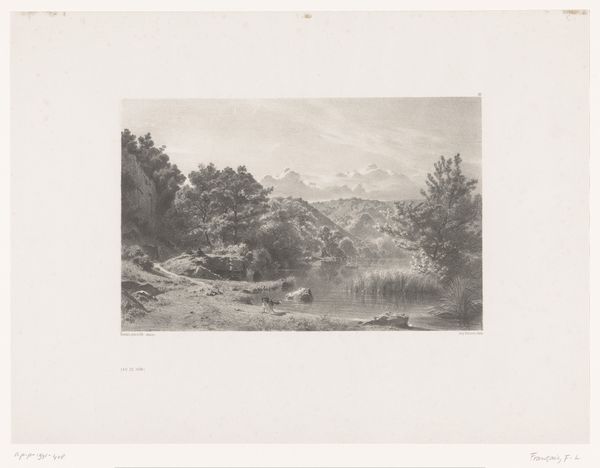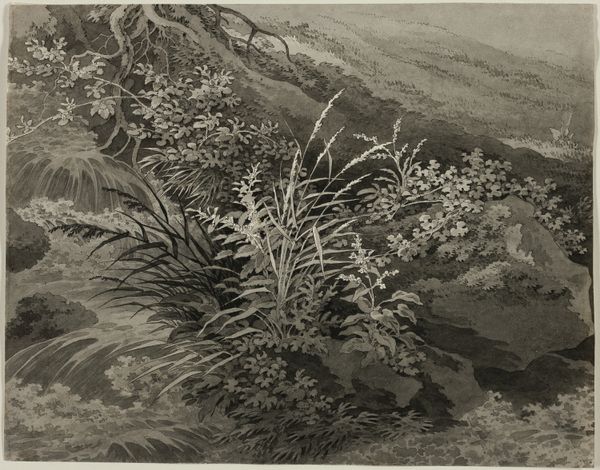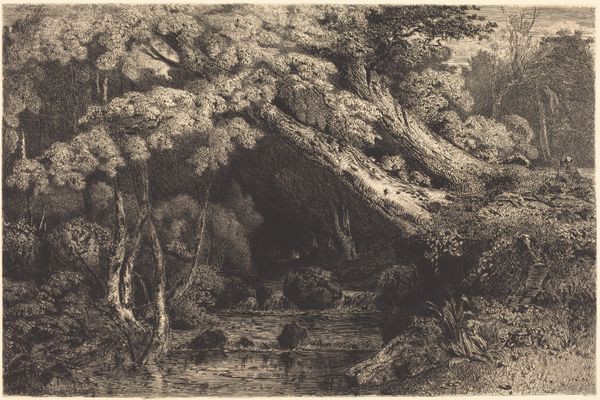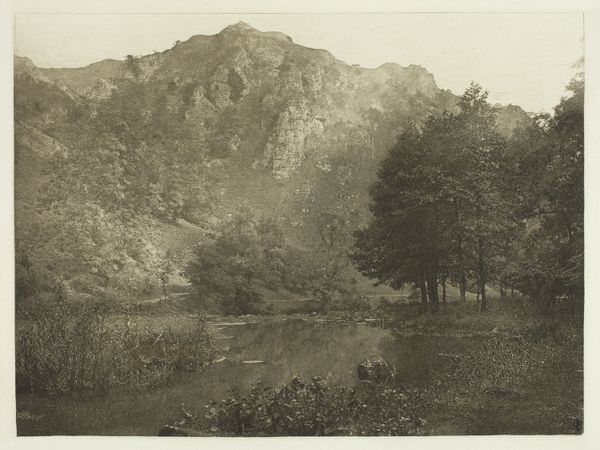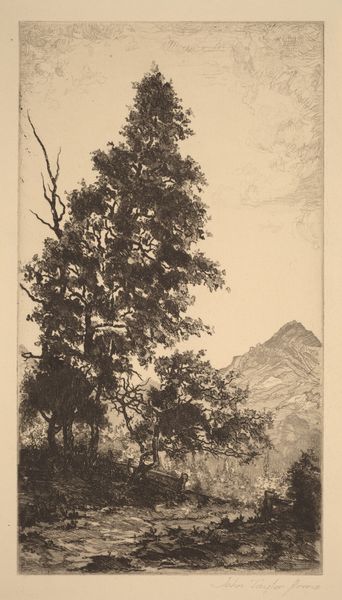
Dimensions: 33.6 × 43.7 cm (image/paper); 47.5 × 62.3 cm (mount)
Copyright: Public Domain
Curator: Looking at Edouard Baldus's "Voreppe (Dauphine)", created around 1855, I'm immediately struck by how the photograph embodies a certain stillness, a sort of pre-industrial serenity, wouldn’t you agree? Editor: There is an arresting visual balance, yes. Notice how the light meticulously captures the contrasting textures and how Baldus renders depth using the strategic placement of shapes, guiding the eye gently. The stony foreground and background vegetation demonstrate that he wants the viewer to contemplate all zones. Curator: The foreground, that field of rocks, feels immense, dominating the image. One must also consider that during this era, landscape photography had significant implications beyond mere aesthetics. Editor: You’re alluding to the role of photography in documenting France’s infrastructure projects. Baldus had state commissions documenting railways and the effects of industrialization. Do you suggest the same sociopolitical considerations are embedded in the texture and light, in other words, in a natural landscape print like "Voreppe?" Curator: Precisely. While it lacks explicit industrial elements, showcasing an untouched landscape implicitly contrasts with the era's rapid development. It could be viewed as a comment on what is being lost to industrial progress. What might feel restorative for us would probably not resonate with citizens in Baldus’s day. Editor: Or perhaps Baldus sought an elevated formal exploration that acknowledged this landscape and wanted to depict an enduring landscape in a classical compositional arrangement? Curator: But even the compositional strategies can reflect a longing for a specific vision of France, linking art to political and cultural discourse. The idealized nature mirrors Romantic sensibilities prevalent during the mid-19th century and even anticipates arguments related to eco-criticism. Editor: The interplay between structure and history continues to enhance one's comprehension, providing diverse interpretive frames. The formal aspects guide how the art means as much as what we know about Baldus, France, and Romanticism. Curator: Indeed. Baldus's image becomes a lens through which we observe a critical moment of change, framed by visual representation.
Comments
No comments
Be the first to comment and join the conversation on the ultimate creative platform.
